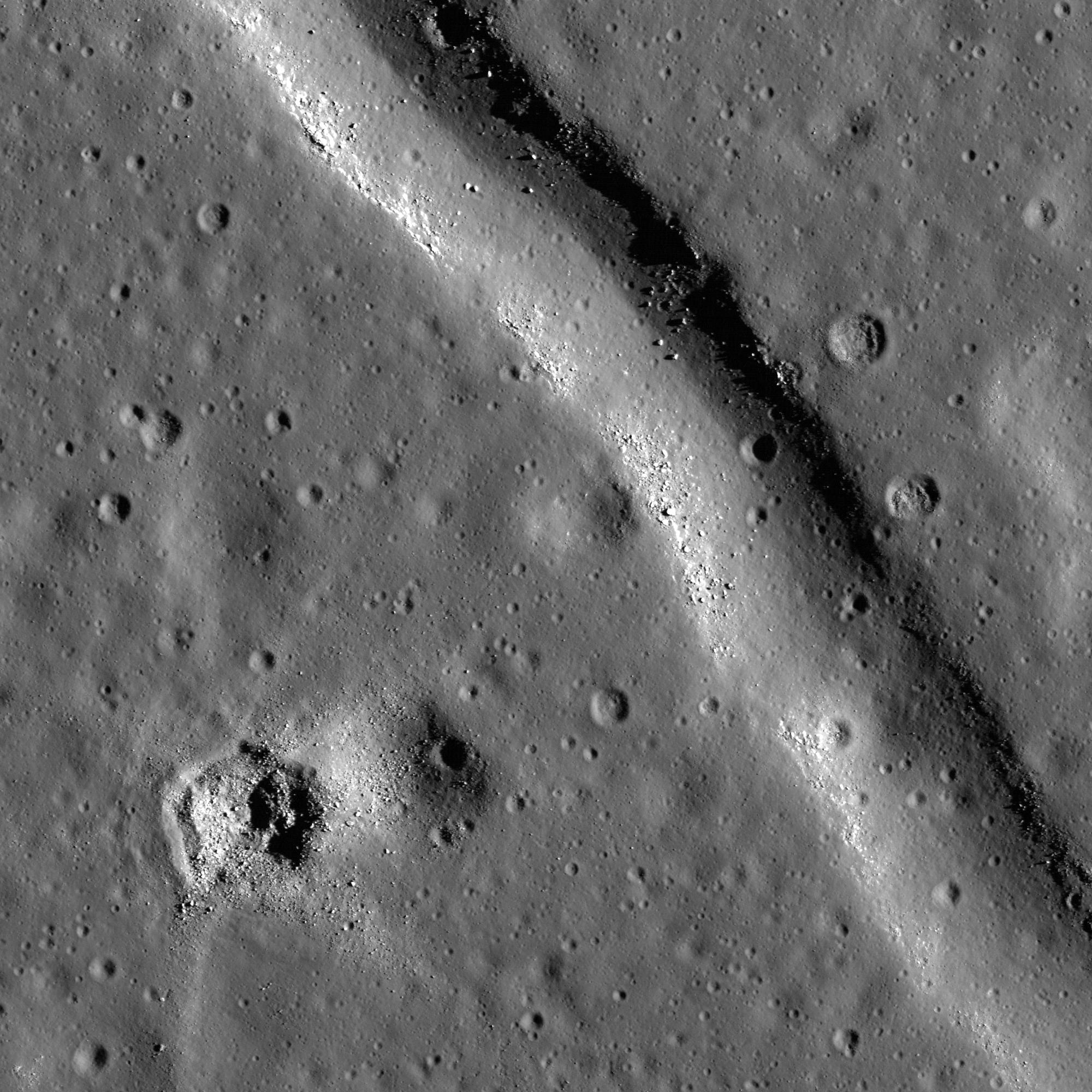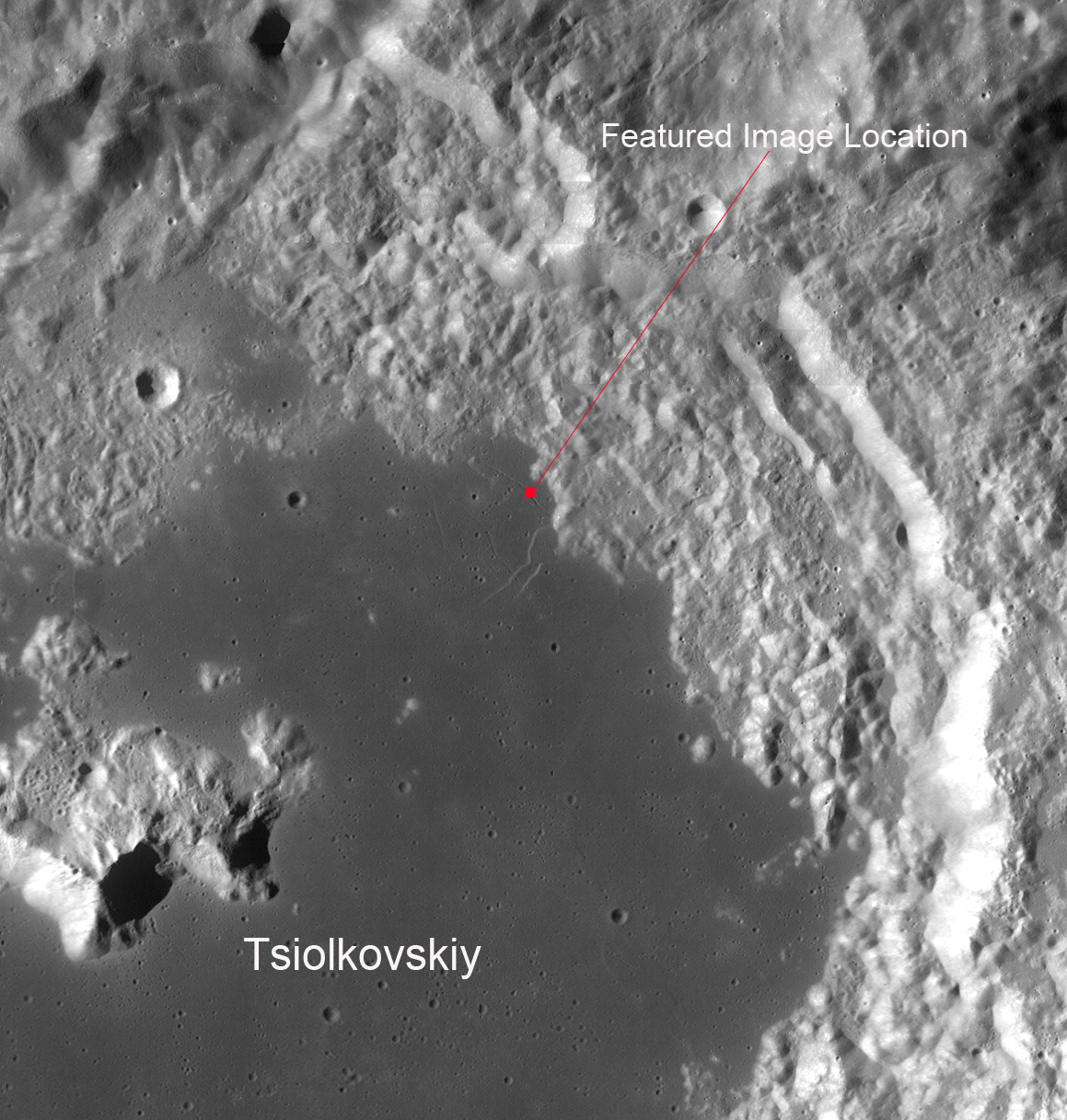
A common question from people examining the Moon through a small telescope for the first time is 'Why isn't the Earth covered with large craters like the Moon?' The first answer is that the Earth does have a number (more than 200) of known impact craters, but clearly nothing like the profusion of craters we see on the Moon. The more complete answer is that the Earth, during the first 700 million or so years of Solar System history, was indeed subject to the same relentless pounding that resulted in the Moon's population of large basins. However, early basins were subsequently obliterated by plate tectonics and surface weathering on the Earth. The Moon's features have been preserved because without wind, water, or plate tectonics, it takes a much, much longer time for the lunar surface to be reworked.
Today's Featured Image provides an example of this difference. We examine a length of shrinkage crack along the northern shore of Tsiolkovskiy's mare basalt volcanic deposits. Visible also in the WAC mosaic below, these features appear to result from contraction of the molten basaltic deposits during cooling. Also present (immediately adjacent to this portion of crack) is a relatively young impact crater. The two formation events are separated in time by several billion years, yet both present bouldery surfaces, and relatively sharp topographic expressions. Because of the slow rate of "space weathering," Lunar scientists must use more subtle indicators of freshness, or stratigraphic and other cross-cutting relationships, to determine the relative ages of landforms. The Apollo and Luna samples allow us to anchor portions of the lunar geologic time scale to radiometric age dates.
Compare the shadows within the linear feature to those of the recent impact in the southwest corner of the opening image. Because the crater is known to be an excavation, and the eastern walls of both features are in shadow, it is clear that the linear feature also shows negative relief. Contrast these shadows to those of this feature from within the same basin, which shows a similar outline, but represents a topographic high. Clearly several processes have been at work within these deposits. The crater is another example of a special type of impact feature called a bench crater (see the October 17, 2012 Featured Image post).
The full NAC image can be explored below. Other Featured Images highlighting landforms related to mare tectonics include Tectonics in Mare Frigoris, and Not Your Average Scarp.
Published by James Ashley on 30 October 2012
